Tyre width is a hotly contested topic both on the road and trail, and the industry seems to be following the ‘wider is better’ mantra.
- Which is faster for racing XC: hardtail or full-suspension?
- Dropper post vs fixed post. Which is faster for XC racing?
- Are 27.5+ bikes faster than 29ers?
The conventional wisdom when it came to XC has been that narrower is better because the worst place for weight is on the outside of the rim, and wider tyres are slightly heavier than their narrow cousins — so in theory they should take more effort to get up to speed and conventional wisdom dictates that a wider tyre will have more rolling resistance.
However, opinions seem to change as often as the tides and now we're beginning to see XC racers embrace the wider rubber hoping for better grip and lower rolling resistance.
So to find out which is faster we sent our resident XC whippet Joe Norledge out to The Forest of Dean in the UK to find out whether skinny or fat is faster on a technical XC course.
The rubber
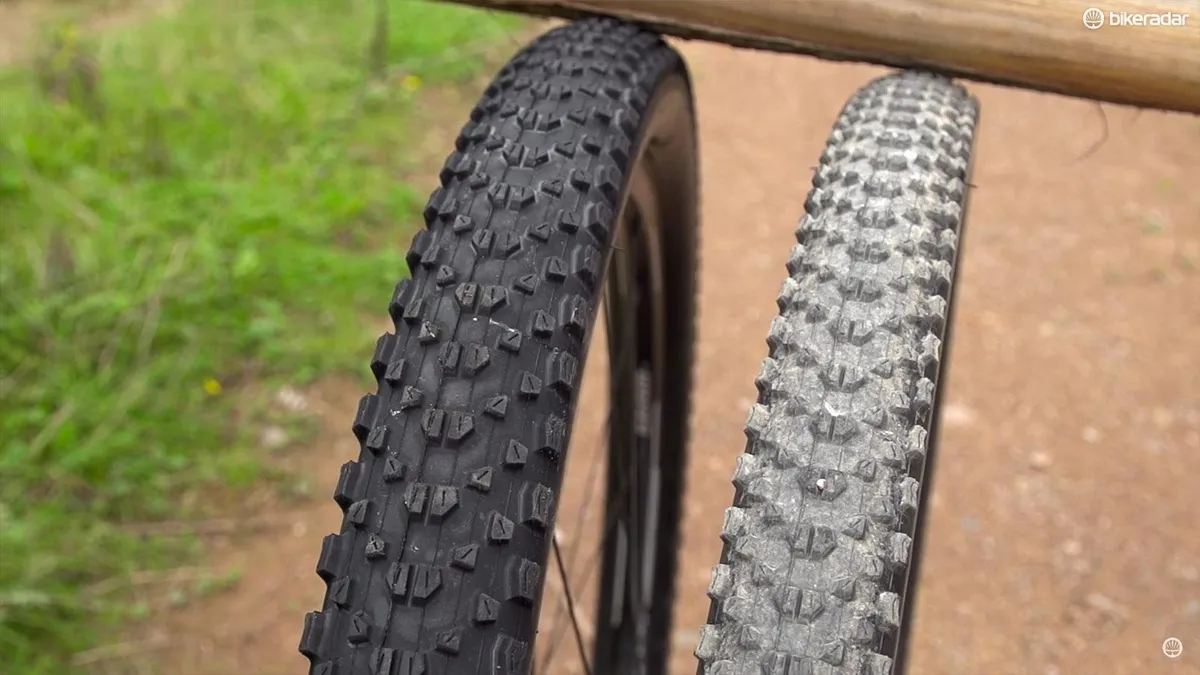
In an effort to eliminate as many variables as possible Joe used two sets of Maxxis Icons in 2.0in and 2.35in. These were mounted on identical 29in SRAM Roam 40 wheels and set up tubeless with the same amount of sealant in each tire. The weight difference between the 2.0 and 2.3in tyres is 598g and 764g respectively.
Because a lower volume tyre pumped to the same pressure as a higher volume tyre will behave completely different to one another, we inflated the tyres to the same tension to achieve the closest characteristics. Following the wisdom of mountain bike legend Keith Bontrager and using LaPlace’s Law we calculated this tension using the formula tension = pressure x tire diameter.
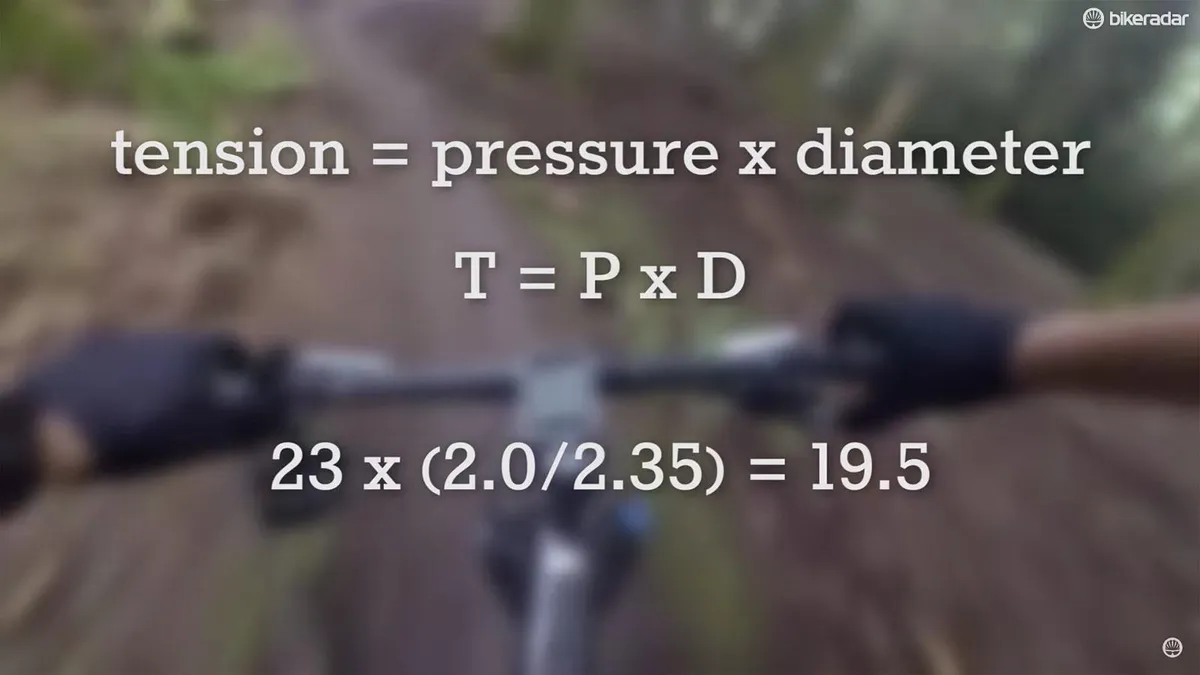
After working out the ideal pressure for the 2.0in tyres as 23psi, we determined that to replicate the same performance in the 2.35in rubber using LaPlace’s Law we needed 19.5psi — rounded to 20psi to correct for gauge error.
Methodology
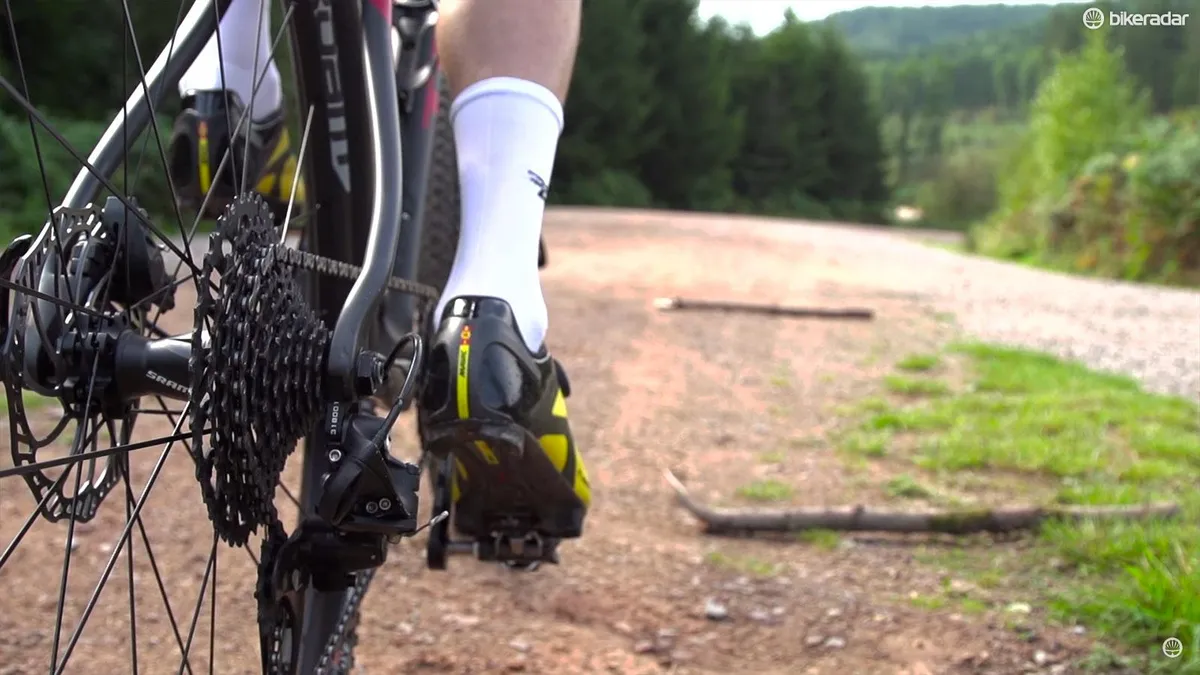
Joe’s testing was made up of three components: the roll down test, the climbing test, and a just under race-pace lap around the Forest of Dean.
The roll down test saw Joe ride down a fireroad with a short course marked with three points. Joe clipped in at the first, started the timer at the second and stopped at the third. Each set up was tested five times and the results were averaged.
The climbing test used a similar set up, with Joe marking out a course with a mix of rocks, roots and fireroad and rode the course three times on each tyre set up aiming for 300watts.
The third test was a full lap of the XC course, which contained the type of terrain you’d expect to find at an XC race.
With the near identical tyre and wheel set ups mounted to Joe’s Trek Procaliber 9.9 he also used a Stages power meter to monitor his effort. This ensured that any slight differences in the results were attributed to the equipment and allowed Joe to put in a consistent effort for each leg of the test.
Results
Roll down test
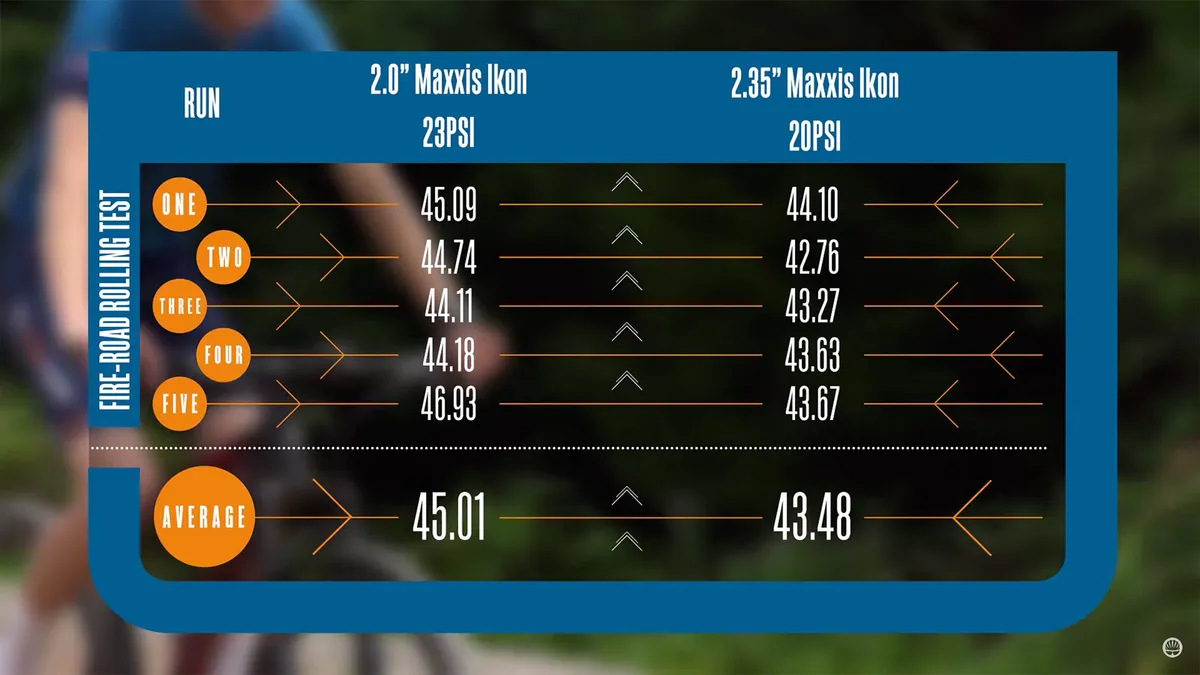
Just like Seb’s test of the 29in vs 27.5+ tyres, the wider rubber was faster on every occasion.
When the results were averaged the 2.35in tyres were 1.53-seconds faster than their skinny cousins. This is likely because the wider casing was better suited to absorb the small bumps along the fireroad than the skinny casing.
Climbing test
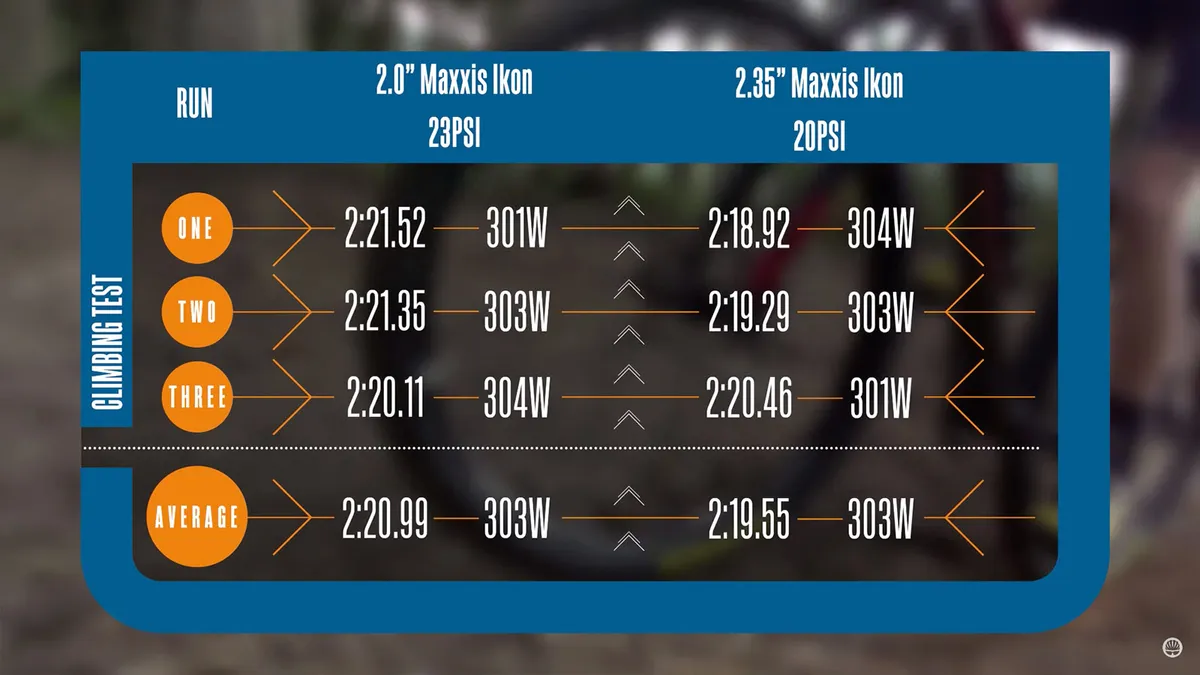
Against the hard and steadfast rule that extra weight is going to put you at a disadvantage when climbing, the heavier 2.35in tyres were also faster uphill. This weight is in the worst possible place as well, right on the outside of the rotational mass, however, it seems the added grip over the rocks, roots and other obstacles proved to be more valuable.
Joe does point out that on a super smooth climb the skinny tyres may in fact overtake the 2.35in rubber, but you’re not likely to find many tarmac smooth hills on a mountain bike trail or XC race course.
XC lap
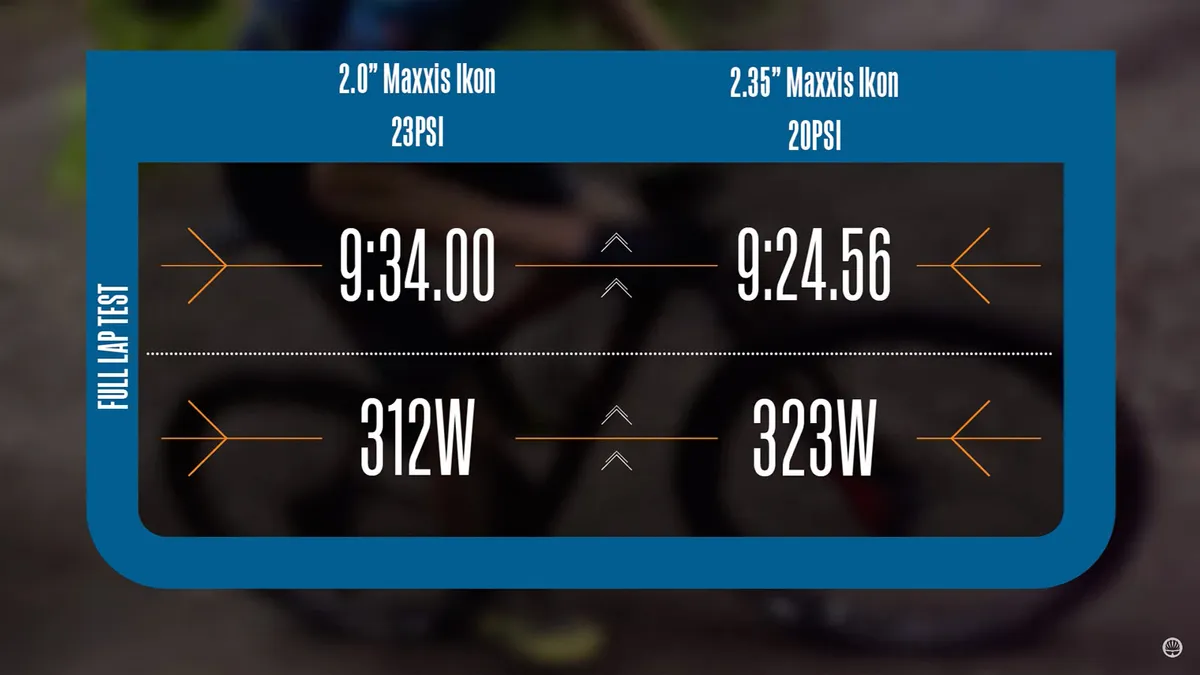
Here the 2.35in Ikons were again faster than the 2.0in version, however Joe’s normalised power was 10 watts higher on the lap with the wider tyres.
We can’t really draw any real conclusions from this data as Joe put in slightly more effort on one lap than the other.
However, Joe does say that “riding the wider tyres on that longer lap just felt so much better. It felt like I had more grip, I just had more control over the rooty sections and I wasn’t being kinda jerked about by the tyres.
“Possibly I might have just been able to put down more power on the corners and brake a little bit later going into the corners and accelerate a bit better on the climbs due to the fact I just had a bit more grip and control with the wider tyres.”
Conclusion
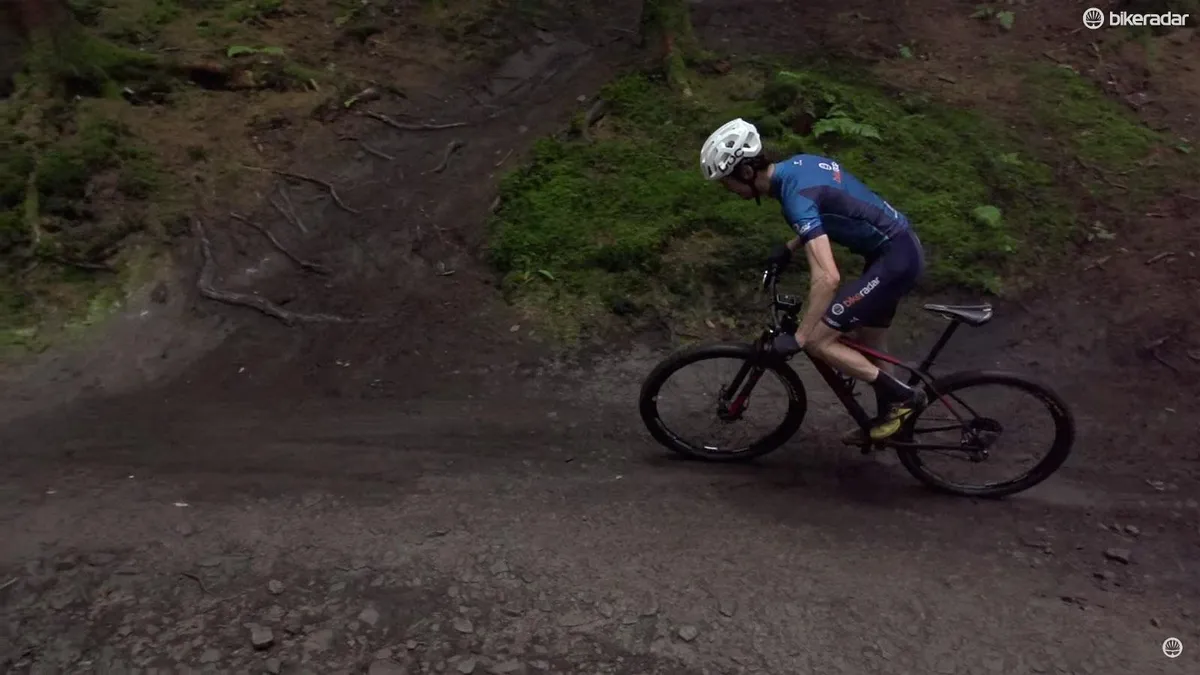
Joe doesn’t hesitate to say that he will be donning wider tyres at his next cross-country race. While 2.35in is quite a wide tyre for XC racing it proved faster then its 2.0in compatriot.
While there is a small weight penalty because of the wider casing, it’s clear that it’s outweighed by the added ride feel, traction and overall control offered with the 2.35in tyre. That said, we’re eager to see how it performs against something in the 2.25in range as it might hit the sweet spot of what we look for in an XC tyre.
Watch Joe test out which tyre is fastest for XC